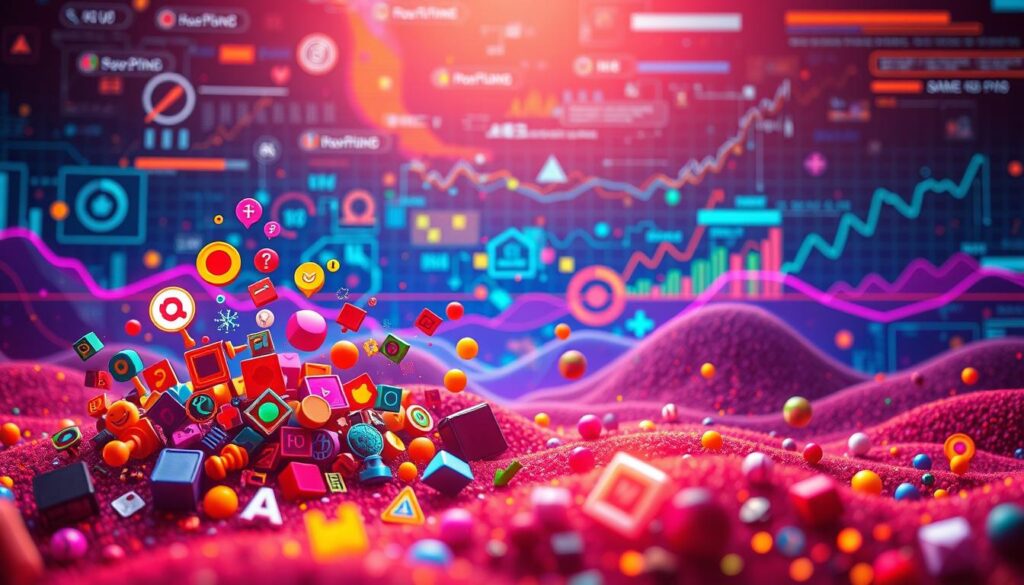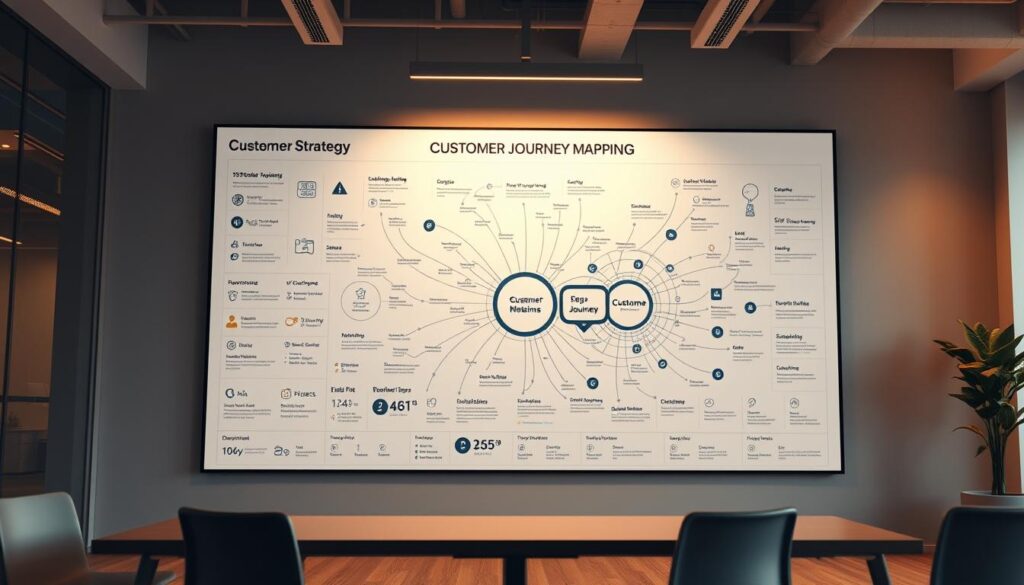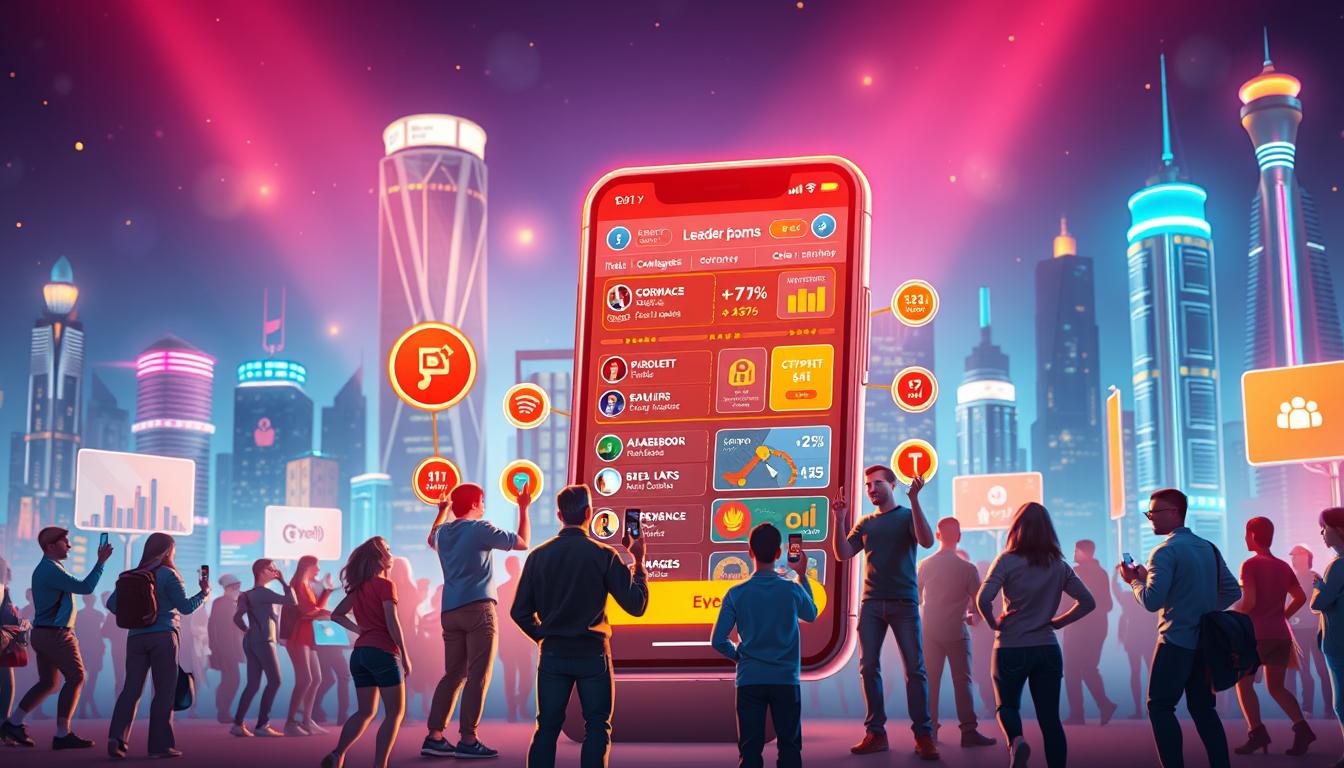Traditional conversion optimization tactics are losing their punch. Your customers scroll past banner ads, ignore pop-ups, and delete promotional emails without a second thought.
The solution lies in digital marketing psychology that taps into basic human drives. Game-based elements transform boring interactions into engaging experiences that customers actually want to complete.
PlayAbly’s research reveals stunning results. Gamified experiences boost performance by 30-50% compared to traditional methods. Users are 2-3 times more likely to use coupons earned through interactive play versus passive handouts.
Most businesses think gamification marketing only works for mobile apps. That’s wrong. Any company can use these proven customer engagement strategies to drive measurable results.
The future of business growth depends on understanding what motivates your audience. Will you leverage game psychology to transform customer interactions, or watch competitors pull ahead?
Key Takeaways
- Traditional marketing approaches are failing to capture modern consumer attention effectively
- Game psychology can increase business performance by 30-50% compared to standard tactics
- Interactive rewards generate 2-3 times higher engagement than passive promotional offers
- Gamification works for any business type, not just mobile apps or gaming companies
- Most gamified experiences achieve 90-95% completion rates among participants
- Digital marketing psychology taps into fundamental human drives for achievement and recognition
Understanding Game Psychology in Digital Marketing
Behavioral science and digital marketing come together to create powerful ways for businesses to connect with customers. Game psychology uses basic human drives that regular ads can’t reach. By knowing these, you can make marketing that feels good, not pushy.
Today, people use many apps and websites every day. Each one shapes what they expect from their online experiences. Your marketing must stand out against these top-notch experiences that know how to engage users well.
The Science Behind Dopamine and Reward Systems
Dopamine is what gets us moving, not just because we’re happy. It’s about the hope of getting something good. This makes us want to keep coming back for more.
Dopamine marketing uses this to make people look forward to what you offer. Unpredictable rewards, like those in slot machines, work best. They keep users excited and coming back for more.

Why Traditional Marketing Fails to Engage Modern Users
Old-school ads and one-way messages can’t compete with interactive stuff. They treat people like they’re just watching, not doing. This misses the mark because it doesn’t meet our need to do things and feel accomplished.
Studies from behavioral economics show interactive stuff can boost engagement by up to 300%. People want to be part of the action, not just the target.
Core Psychological Triggers That Drive Conversions
Four main psychological triggers are key to good design: achievement, social recognition, curiosity, and feeling like you’re making progress. Achievement comes from reaching goals and milestones.
Social recognition meets our need for status and feeling like we belong. Curiosity makes us want to explore and find out more. Feeling like we’re making progress is satisfying.
| Psychological Trigger | Marketing Application | Conversion Impact |
|---|---|---|
| Achievement | Milestone rewards and completion badges | 45% increase in task completion |
| Social Recognition | Leaderboards and sharing features | 60% boost in user engagement |
| Curiosity | Mystery offers and progressive disclosure | 35% higher click-through rates |
| Progress Satisfaction | Visual progress bars and level systems | 50% improvement in completion rates |
Knowing these triggers lets you create marketing that feels natural and rewarding, not like an interruption.
Essential Gamification Marketing Elements for Higher Conversions
Turning casual visitors into engaged customers is possible with the right game psychology tools. These gamification elements tap into our basic needs, driving us to act and connect with brands. Knowing how to use these elements can turn your marketing into exciting experiences people want to have.
Points and Scoring Systems That Motivate Action
Points give us instant feedback, satisfying our need for achievement. By giving points for actions like signing up for emails or making purchases, we make everyday tasks rewarding. The key is to make points feel valuable and easy to get.
Good point systems clearly show what actions earn rewards and how those points can be used. For example, many businesses give points for reviews, referrals, and repeat buys. These points can be traded for discounts or special access.
Progress Bars and Visual Achievement Tracking
Progress bars tap into our drive to finish tasks, thanks to the Zeigarnik effect. LinkedIn’s profile completeness meter is a great example. Users feel driven to reach 100% completion, even if they just wanted to add basic info.

Visual progress indicators make abstract goals concrete. They track things like onboarding steps, loyalty program tiers, or course completion. These visual cues boost user engagement by showing a clear path to success.
Badges, Rewards, and Recognition Programs
Digital badges meet our need for recognition and status. They prove user achievements and encourage more participation. Strava’s achievement badges for monthly challenges show how recognition boosts repeated behavior.
Good badge systems celebrate both big milestones and small steps. This keeps users motivated throughout their journey, not just at the end.
Leaderboards and Competitive Social Elements
Competition boosts engagement by using social comparison psychology. Leaderboards create a sense of urgency, pushing users to keep participating. Smart businesses use these conversion mechanics to increase customer value over time.
The best leaderboards segment users fairly. Comparing new users to veterans can discourage participation. Instead, create leagues based on experience or time to keep competition fair. Companies that outsource customer service calls often use point systems to track rep performance and maintain quality.
Step-by-Step Guide to Implementing Game Mechanics
Starting a successful gamification in your business needs a clear plan. This implementation strategy turns your marketing into fun experiences that work. You don’t need a lot of tech to start – just a step-by-step plan that matches your goals.
Understanding your audience is key to good gamification. Companies like PlayAbly help by working with you to set goals and know your audience. In just a week, they create prototypes that make your ideas real.

Phase 1: Mapping Your Customer Journey for Game Elements
Customer journey mapping is the first step to success. Identify all points where customers touch your brand. These are chances to add game mechanics that make things more fun.
Look at your current funnel to find where people drop off. These spots are great for adding game elements. Focus on moments where customers need extra encouragement to take action.
Write down every part of your customer’s journey, from start to after they buy. This detailed map shows where to add achievements and rewards naturally.
Phase 2: Setting Up Progress Indicators and Milestones
Progress indicators keep customers moving. Use visual elements to show progress toward goals. Progress bars are great for steps like setting up an account or finishing a course.
Set clear milestones to celebrate small wins. These milestones give customers a boost of happiness. Make each milestone count by linking it to real benefits or recognition.
Phase 3: Creating Reward Systems for Target Actions
Good reward systems match your business goals and give real value to customers. Design conversion tactics that offer good reasons for certain actions.
Think about different rewards like discounts, special content, early access, or social kudos. The best programs mix quick rewards with long-term benefits. Personalize rewards whenever you can.
Phase 4: Testing and Optimizing Your Game Features
Keep testing your gamification to make sure it works. Start with A/B tests to compare gamified experiences with regular ones. Watch metrics like engagement and conversion rates.
Use AI to make game experiences better based on user data. This gamification optimization lets you improve based on real user actions, not guesses.
Get feedback from surveys and interviews to understand what works. Knowing why certain elements work helps you use them in more places.
Proven Case Studies in Behavioral Design Success
Leading brands have shown that gamification marketing works. They use behavioral design to make customer interactions fun. This leads to loyalty and more sales.
Here are some case studies on how different companies used game mechanics. Each one was designed to fit their audience and goals.
Starbucks Rewards: Turning Coffee Purchases into a Game
Starbucks made buying coffee a game with their rewards program. Customers get “stars” for each purchase, giving them instant rewards.
The program has different levels with special perks. Days with extra points encourage more visits. Every purchase feels like a step toward a free treat.
This strategy increased visits by 15% and raised average spending.
Nike Run Club: Building Community Through Competition
Nike’s app turns running into a competition. Users track their runs and earn badges. They can also compete with friends and others worldwide.
Nike’s success comes from building a community. Runners share their achievements and celebrate together. This builds strong bonds beyond just buying products.
Nike saw a 50% increase in customer value from app users.
Duolingo: Mastering Streak Psychology for Daily Engagement
Duolingo made language learning fun with its app. Users get XP points, keep streaks, and compete with friends.
The streak system keeps users coming back every day. Personalized avatars and badges reward their efforts. Weekly challenges keep things exciting.
These gamification success stories show that well-designed games can engage people. The secret is to understand what motivates your audience.
Advanced User Engagement Strategies and Conversion Tactics
Conversion tactics use data and psychology to engage customers deeply. They go beyond simple points to build real connections. This leads to better business results. AI now makes unique gaming experiences affordable for more brands.
Personalized Challenges Based on User Behavior
Personalization strategies tailor experiences to each customer. They use data on what you buy and how you browse. This makes challenges that feel just right for you.
These strategies boost completion rates by up to 40%. Gamified content also helps by collecting valuable data through quizzes. This data helps improve your marketing and products.
Scarcity and Time-Limited Achievement Mechanics
Variable rewards are more engaging than fixed ones. Limited-time badges and exclusive achievements tap into FOMO. They create the same excitement as in games.
Flash challenges and timers create a sense of urgency. Seeing a 24-hour window to earn a reward motivates users to act fast.
Multi-Tier Loyalty Programs with Escalating Rewards
Advanced loyalty programs have multiple tiers to increase value. Each tier offers better rewards, encouraging users to keep engaging. This turns one-time buyers into loyal fans.
The trick is to make each tier reachable but also desirable. User engagement grows when users see their progress and the benefits of moving up.
Social Sharing Features That Drive Viral Growth
Viral marketing spreads your brand when customers share it. Features like achievement announcements and leaderboards encourage sharing. This helps your brand grow organically.
Smart sharing tools make it easy to share achievements. They highlight your brand subtly. This approach saves money and builds trust with new customers.
Transform Your Business with Game-Powered Marketing
The future of gamification marketing is now. Businesses that use these strategies today will lead tomorrow. You can make real connections with customers and see real results.
Businesses are facing tough times and need to change. Paid ads are getting more expensive, but games offer a cost-effective way to engage. Customers want to feel important and achieve something.
Digital marketing is evolving fast. Start with simple things like progress bars and points. Test rewards that fit your customer’s path. Then, grow your game elements as you see success.
Understanding human psychology is key to winning. Every action customers take is driven by a desire to achieve and be recognized. Games tap into these desires.
Conversion trends show that gamification works. It boosts engagement, customer value, and loyalty. These changes are here to stay.
You have a big decision to make. Will you use these strategies to build strong customer ties? Or will you let others win with better experiences?
The future of conversion optimization is here. Will you play to win or just watch?

